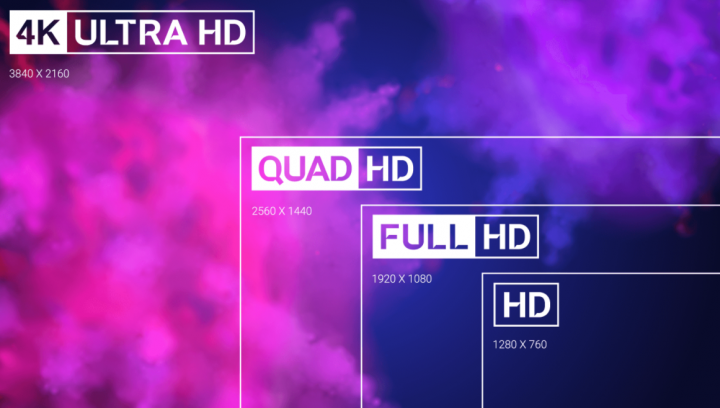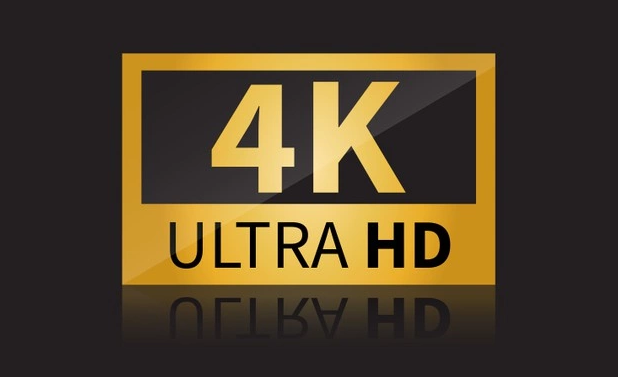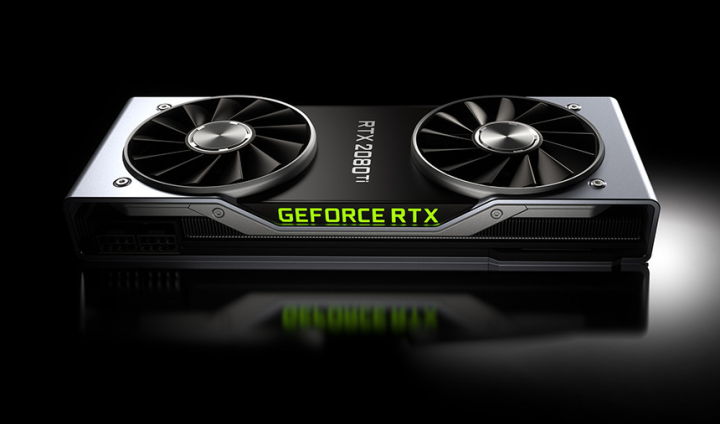
Whenever you guys see a device along with a gamer tag attached to it. It’s only natural that you’ll be expecting high-end specs and a pageant for a really wicked-looking exterior. Most of the time, that’s a really accurate assumption. Whenever it comes to gamers, one cannot deny that they need powerful PCs. In order to run their games at the highest video settings, now run them smoothly at 120 FPS, or both. However, then again, gaming is a very visually-oriented hobby, and the monitor you guys are using plays an important role in immersing yourself in your virtual worlds. In this article, we are going to talk about 1080p vs 1440p – Best Monitor resolution for Gaming. Let’s begin!
Contents
- 1 Most Common Resolutions Used in Gaming? | 1080p vs 1440p
Most Common Resolutions Used in Gaming? | 1080p vs 1440p
As of the writing of this article, there are 6 different resolutions used in mainstream gaming monitors. Along with some being more famous than others 1080p vs 1440p, and these are the following:
- 720p
- 1080p
- 1440p
- 2K
- 4K
- 8K
What is a Pixel?
Pixels are also known as picture elements also. They are the smallest physical points on your monitor and also any other display. Moreover, they constitute the building block of any screen. Besides, pixels and resolution are interconnected as well. This means the higher the resolution, and the higher the pixel count.
Nevertheless, in order to ease up things, you guys can think of pixels as pieces of the puzzle. They are joined together to make up bigger photos. Just like that, a lot of pixels are joined together to make an image that sums up the resolution of your monitor. Whenever discussing pixels, it is important to know about PPI and DPI; now, let’s see that.
720p
720p is also called HD-ready or standard HD and also has a standard screen resolution of 1280×720 progressively displayed pixels or 0.9 Megapixels as well. It is the oldest of the screen resolutions on our list, and when it is slowly losing terrain for the bigger ones. It still holds an important market, especially for those that use older monitors, or also that gaming on older TV sets.
The standard aspect ratio is 16:9, and due to this, it is also known as widescreen HDTV.
1080p
1080p is also called Full HD or FHD and also has a standard screen resolution of 1920×1080 progressively shown pixels or 2.1 Megapixels. This specific resolution is the most famous one on our list based on market share. And many other than the actual number of pixels involved (and thus the superior image clarity). There aren’t any other differences between it and 720p since, such as, both of them share an aspect ratio of 16:9.
The widespread popularity of the format is because of its application in pretty much each and every form of media imaginable. Such as , the 1080p standard includes television broadcasts, Blu-ray Discs, smartphones, YouTube videos, and Netflix TV shows and movies, TVs and projectors, PC monitors, and gaming consoles as well.
Even small handheld devices like cameras, phones, and tablets support the 1080p format, also even the entry-level ones.
1440p
1440p is also called QHD (Quad HD) or WQHD (Wide Quad HD) is actually a term used to describe a whole host of displays that have a vertical resolution of 1440 pixels as well.
Common 1440p resolutions include:
- 5120 × 1440
- 3440 × 1440
- 3200 × 1440
- 3120 × 1440
- 3040 × 1440
- 2960 × 1440
- 2880 × 1440
- 2560 × 1440
- 2304 × 1440
- 2160 × 1440
- 1920 × 1440
Due to this great variety of possible resolutions, and the display ratio can vary greatly anywhere between 4:3 to 32:9. And the Megapixel value can be anywhere between 7.37 and 2.76 Megapixels as well.
But, the most common 1440p resolution is actually that of 2560 × 1440 along with a display ratio of 16:9 and 3.69 Megapixels. And also it can mostly be found in smartphone shows, and for PC monitors, and also console gaming monitors or TVs. Especially because of it being a transitioning resolution that is somewhere between 1080p and 4K also.
1440p is the most widely used screen resolution in gaming monitors, precisely due to the wide variety of screen ratios that it also offers. Especially because you may have noticed have gamers have a soft spot for ultra-wide and maybe even curved monitors that can give them benefits in shooters or RTS games.
2K
Just as along with 1440p, 2K is a term that describes a whole family of displays. All of which have a vertical resolution of around 2000 pixels, and also the Digital Cinema Initiatives (DCI) defines 2K when having a standard of 2048 × 1080 pixels.
Many other common 2K formats include:
- Native resolution: 2048 × 1080
- Flat cropped: 1998 × 1080
- CinemaScope cropped: 2048 × 858
Also, one thing worth noting about 2K and 1080p is that. although 1920 × 1080 does indeed also have a horizontal resolution of around 2000 pixels. Most media usually treat the 1080p and 2K resolutions separately, and also the DCI along with many other industry standards do not really recognize 1080p as a 2K resolution either.
4K
4K is the most heavily discussed resolution nowadays because it is available everywhere in all forms of digital content. From standard online media to the common smartphone screen as well. Besides, it is slowly gaining popularity as being the most famous screen resolution on the market, coming in close second to 1080p.
4K refers to any screen that actually has a horizontal resolution of around 4000 pixels, and it is also known as Ultra HD (UHD). Although the DCI does have also two different resolutions as far as 4K is concerned, and it relies on the type of media in question:
- Television and consumer media: 3840 × 2160 (4K UHD)
- Movie projection industry: 4096 × 2160 (DCI 4K)
8K
8K resolution is the highest resolution defined in the UHDTV standard, and it also refers to an image. Or show along with a horizontal resolution of around 8000 pixels, and the most commonly used being 7680 × 4320 as well.
When 8K devices already exist, and the format is still relatively new to the market, and also the hardware. That can permit efficient 8K playback in gameplay hardly exists. Actually except if you are talking about the latest GPUs that Nvidia has launched actually. However, even they can have a difficult time rendering modern-day games along with the video settings at ultra-high, at 8K resolution, and also at least 60 FPS.
Which Resolution Should I Get for Gaming? | 1080p vs 1440p

720p vs 1080p
For starters, you’ll guys barely find any new devices that are of that resolution. And they are actually really worth it if you’re only ever planning on playing really older titles that would look just sad on the higher resolution shows. Games such as Diablo II, Heroes III, Age of Empires, and more.
That being said, a 1080p monitor is a minimum of where you should start your browsing queries as well. Especially because producing them has reached a point where you can actually get a really good one for around $100, and some of the really good ones come along with features lunch as AMD-Sync or Nvidia G-Sync to help decrease screen tearing.
Even console gamers can depend on a good old 1080p monitor. Especially if they still play on the Xbox One, and they also work well even along with the most affordable gaming GPUs.
4K
4K is on an entirely different level compared to our many other entries, and anyone that will buy such a monitor will quickly see the difference. Especially whenever all the game’s settings will be set to ultra-high and you can clearly see each and every single blade of grass while playing something just like The Elder Scrolls V: Skyrim.
Sure, you will have a monster PC to run 4K content at reasonable FPS levels. However, if you already have a powerful PC. Then 4K is indeed the best resolution for a monitor that you guys should aim to.
8K
8K monitors do exist, and because they have twice the number of pixels as 4K ones. This also translates into much better image quality as well.
Unfortunately, as of the writing of this article, there are also no GPUs on the marke. That can render modern-day games in 8K at even 60 FPS too, so you’ll just have to use the monitor to watch 8K movies. Whenever, playing the games at more manageable resolutions, like 1440p or 4K.
Do You Have the Hardware to Render It? | 1080p vs 1440p

1080p
Most modern-day gaming PCs (and also even some non-gaming PCs for that matter) can render games in 1080p without even a problem. So unless you have a desktop that is made somewhere around 2015, you can also upgrade to a 1080p monitor without even having to worry too much.
1440p
1440p gaming monitors mostly come with above-average refresh rates, and also even average GPUs can handle the resolution without a problem. That in turn eliminates blurring and tearing which can really be off-putting in fast-paced games like shooters.
One last reason why upgrading to a 1440p monitor is actually recommended is that as there isn’t that much of a difference between it and 1080p. You can easily check out whether your PC could handle it.
Simply observe how it is currently handling 1080p content, and also use a reliable benchmark tool. In order to see via how much (if at all), will the video performance go down when you make the switch.
4K
Jumping from 1080p or even 1440p to 4K is not as easy as it sounds, becuase we’re basically talking about rendering about 4 times the number of pixels. And whenever, the difference in image quality is indeed astronomical. So is the cost of a PC that can render it efficiently as well.
Such as, you need a real space-age PC to run 4K games at ultra-high settings. As even the RTX 2080 Ti can struggle along with rendering 4K content, and since gamers have to find a fine line between performance. And visuals, 120 FPS on a 1440p will also beat 15 FPS on a 4K monitor every single day of the week.
If you guys are also looking to purchase a new GPU but have no idea where to start. And we’ve already covered an article listing the best gaming GPUs that you can also buy. And whenever, none of the affordable ones can handle 8K, most of them can easily handle 4K of less as well.
8K
The PlayStation 5 basically supports 8K graphics, and so does the Xbox Series X, and PC users that want to game at 8K will need to buy the Nvidia’s GeForce RTX 3090. That promises to enable 8K 60 fps HDR gaming, recording, and streaming along with ShadowPlay on PCs.
That being said, if you don’t have the hardware or the budget in order to back up an 8K display. Then the only ones that are currently worth it are TVs and those solely to watch 8K content over the Internet.
Best Screen Resolution for Gamers | 1080p vs 1440p
We’ve already ruled out 720p as it is too dated, 2K because it is far too niche. And most games don’t even have native 2K resolution support, and also 8K since it is so new that nothing gaming-related really supports it. We are now left along with 3 screen resolutions. But, current market trends seem to favor 1440p monitors. Especially since this resolution offers some of the most coveted aspect ratios that gamers mostly flock to.
1440p monitors are also incredibly affordable, along with a lot of them costing under $300. That makes them almost as affordable as their 1080p counterparts, yet you guys gain at least 33% more pixels. More so, most modern-day gaming PC, also even the average ones, can easily handle 1440p games. And because most of these monitors have a native 120Hz refresh rate, they are also ideal for almost any gaming setup.
They are really easy to find, with every major monitor manufacturer having at least a dozen models readily available at all times. And if you’re into curved monitors, then you’ll mostly notice that the only ones that are actually any good are 1440p anyway.
All in all, between 1080p, 1440p, and 4K, it’s actually all a matter of personal preferences and the budget that you have at your disposal. However, no one can judge you for wanting to know what type of monitor will give you with the most bang for your buck.
Conclusion
Alright, That was all Folks! I hope you guys like this “1080p vs 1440p” article and also find it helpful to you. Give us your feedback on it. Also if you guys have further queries and issues related to this article. Then let us know in the comments section below. We will get back to you shortly.
Have a Great Day!
Also See: How to Clone Kodi Configuration and Duplicate the Setup






